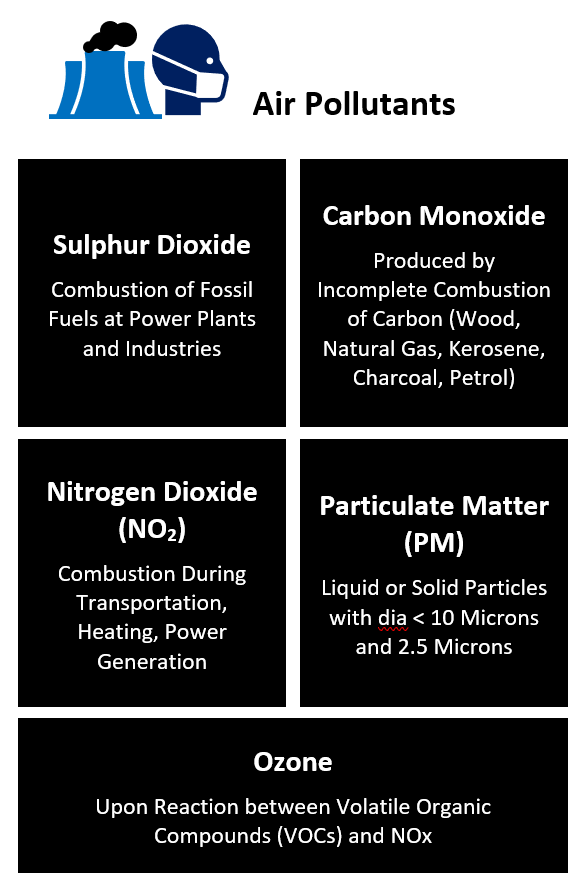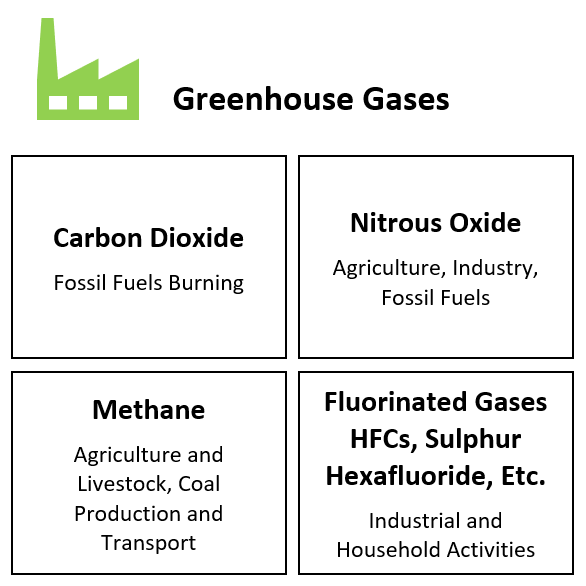Air pollution occurs when the indoor or outdoor environment is contaminated by agents altering the atmosphere’s natural state[1]. Common pollutants are particulate matter (PM 2.5 and PM 10), sulphur dioxide, nitrogen dioxide, ozone and carbon monoxide[2]. The WHO’s PM 2.5 guideline is 10 μg/m3. Nearly 91% of the global population is exposed to unhealthy air[3].
Air Pollutants vs. GHG Emissions
GHG emissions do not necessarily include pollutants but could share the same sources. Attempts to reduce GHG emissions lead to reduction in co-emitted air pollutants. Reducing GHG emissions can prevent nearly 0.5 million premature deaths annually[4]. As a sector, transportation is the largest contributor to the emissions of PM 2.5 fine particles in North America and accounts for 7% in Asia.
Supply Chain and Air Pollution
With supply chains growing increasingly complex and the regulations getting tighter, goods are sourced and transported through intricate networks resulting in higher emissions. According to estimates, shipment volumes will grow by 45% in the United States alone by 2040, substantially increasing emission levels. Over 50% of NO2, 30% of VOCs and 20% of total PM emissions can be attributed to the transportation sector in the US[5].
While it is common to measure GHG emissions across the value chain, companies do not typically account for the air pollutants. Supply chains that dominate emissions are food, construction, fashion, FMCG, electronics and automobile[6].
Implications
Regulatory Risks
Air quality regulations are one of the early legislative measures taken by almost all countries. As statutory regulations strengthen globally, companies struggle to grapple with regulatory risks along the entire value chain. For example, some Chinese and India airlines were at the risk of being excluded from airports within the EU owing to their nonconformity to the EU’s emissions trading system[7]. An aftermarket emissions control device cost a company $1.1 million penalty under the Clean Air Act as a part of National Compliance Initiative[8].
Health and Wellbeing along the Value Chain
The disproportionate effects of air pollution seen in developing nations can be explained by studying global value chain in parts. These countries fall at the lower end of manufacturing environment spectrum due to broken tax policies, limited investment in sound infrastructure and low workforce quality[9]. China has seen maximum deaths caused by fine particle pollution – i.e., 100 per 100,000 people followed by India 70.44 per 100,000 people[10]. From a supply chain standpoint, a study found that 38% of national premature deaths in China occurred due to production in a region that was meant to be consumed in other regions[11]. Across the supply chain, the estimated SO2 emissions induced by Beijing was 76 times more than its share as a receptor[12]. In conjunction, migrant workers find it extremely challenging to adjust to the air quality of Delhi. The city experiences bad air for more than three quarters of the year and hence, the attrition rate among workers is often high[13].
Loss of Business
Apart from health and wellbeing, the bottom line of organizations dwindles if they are to operate in a polluted environment. A study of daily spending, air pollution and climate data in Spain observed that consumers spent less on polluted days than on other days. Consumer spending might increase by $19-$30 billion if the ozone and particulate matter decreased by 10%[14]. Industries like food and beverages are particularly hit by poor air quality. Sensitive crops like wheat, soybean, potato and rice are staples around the world. Polluted air stunts the crop growth and decreases the yield. Crop losses attributed to air pollution can disrupt the material flows causing food insecurity[15].
How do we make supply chains account for the factors governed by air quality?
1. Start with emission accounting and tracking.
Since disclosing Scope 1 and 2 emissions is now in the mainstream, companies are being encouraged to aim Scope 3 emissions for attaining maximum transparency. Nearly 12,000 suppliers disclosed through Carbon Disclosure Project (CDP) in 2021 and 90% have engaged their suppliers in committing to environmental performance[16]. Hence, emission tracking across the value chain could act as a starting point to identify GHG hotspots and initiate further investigation into sources of pollutants.
2. Regulatory risks mapping related to air pollution.
As supply chains are complex and spread geographically, it is imperative to consider the legislative provisions of all locations. Integrating these risks at the planning stage can avoid additional costs of shifting the facilities if and when statutory amendments are made. By aligning with pollution norms, companies avoid paying hefty fines and a stained reputation.
3. Upstream and downstream social disclosure.
Health and safety plans are mandatory for every organization. While companies set the foundation for ideal working environment within their premises, their operations could be a potential contributor to contaminating air elsewhere. Organizations could also develop performance measurements in terms of pollution alongside the employee and supplier policy disclosures to capture the wavelength and intensity of the impact.
4. Forecasting and mitigating using AI.
Studying pollution patterns and influencing factors can help businesses sail through unprecedented times. For instance, a food and beverage chain established a correlation between the weather and buying behavior to predict product demand[17]. Forecasting can aid in formulating alternative strategies to counter the decline in sales owing to polluted air.
Air pollution is one of the leading causes of deaths worldwide[18]. The WHO estimates that around 7 million die every year because of unhealthy air. Air pollutants accounting across supply chains is uncommon. Associating the GHG emissions with pollutant data by developing indicators can help identify potential impacts on worker wellbeing, material availability and consumer demand, and aid the development of mitigative strategies. Aligning forecasts with statutory requirements can guard supply chains against pollution-related disruptions.





